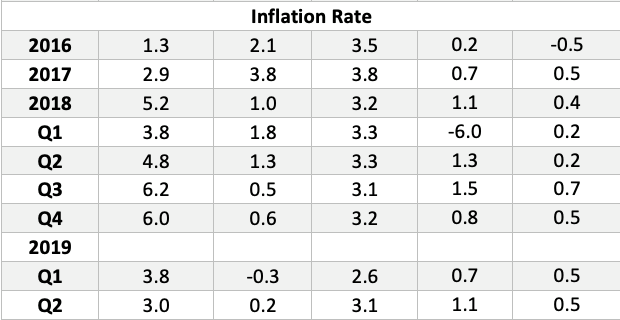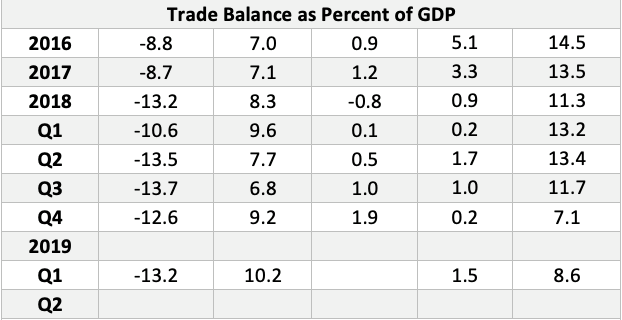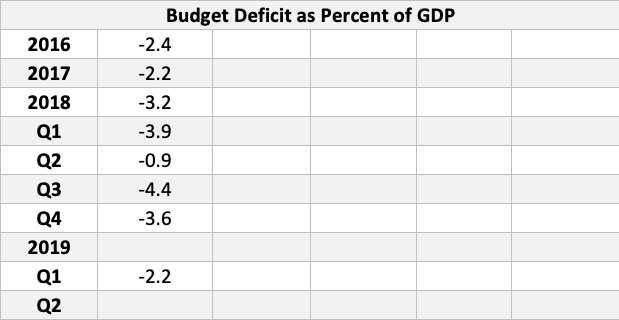For this Monday’s state of the nation address of the President, I endeavor to present in a table the macroeconomic performance of the Philippine economy beginning with the last year of the former president in 2016 up to the latest quarter of the year when data is available. This I also show side by side with the performance of the four other members of the ASEAN 5 close to us in order to compare our performance with them.
Let me start with the three basic macroeconomic indicators of development – the GDP growth rate, inflation rate, and unemployment rate.
On Gross Domestic Product or GDP, which measures the total output of goods and services that the country produces, we find that from 6.9 percent annual growth in 2016, it has gone down to 6.7 in 2017, 6.2 percent in 2018, and finally to 5.6 percent in the first quarter of the year.
I agree that the first quarter performance was due largely to the inability of the government to implement its various programs and projects because of the late approval of the national government budget but the decline in the 2018 performance could be due mainly also to the Train Law that added to the cost of production and raised prices.
High cost of production tends to lower output while higher prices tend to lower demand resulting in lower GDP growth rate.
Inflation was very low at 1.3 percent in 2016. This went up to 2.9 percent in 2017, then to 5.2 percent in 2018 when the Train law took effect. The last two quarters shows slowing inflation rate as the full effect of the Train law has already dissipated.
The rate of unemployment has remained low and this augurs well for the well-being of our people.
If there is any pain in our neck, it is in our large trade deficit or the negative balance of our export and import. Note that an export adds up to the size of the GDP and an import cuts it down. By how much the GDP will rise or fall is partly due therefore to our trade performance.
We find that our trade deficit was recorded at negative 8.8 percent of our GDP in 2016 and negative 8.7 percent in 2017. This has worsened to negative 13.2 percent in 2018. The same negative trade balance was recorded in the first quarter of the year.
Our external debt was 24.5 percent of our GDP in 2017. This went down a little to 23.3 percent in 2017 and 23.2 percent in 2018 but went up again to 24.0 percent in the first quarter of the year.
Finally, from negative 2.4 percent in 2016 and negative 2.2 percent in 2017, the government budget deficit has worsen to negative 3.2 percent in 2018 because of the build-build-build program of the government and despite the added collection from the Train Law. It has gone down to negative 2.2 percent in the first quarter of the year due again to the late approval of the national government budget.
Are we doing well? Overall no, if we look at the GDP growth performance alone, which is the most closely watch indicator of economic performance. Everything good and bad that happens to the rest of the economy affects the GDP.
Source: Bangko Sentral ng Pilipinas
Disclaimer: The comments uploaded on this site do not necessarily represent or reflect the views of management and owner of Cebudailynews. We reserve the right to exclude comments that we deem to be inconsistent with our editorial standards.






